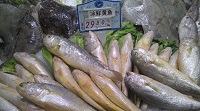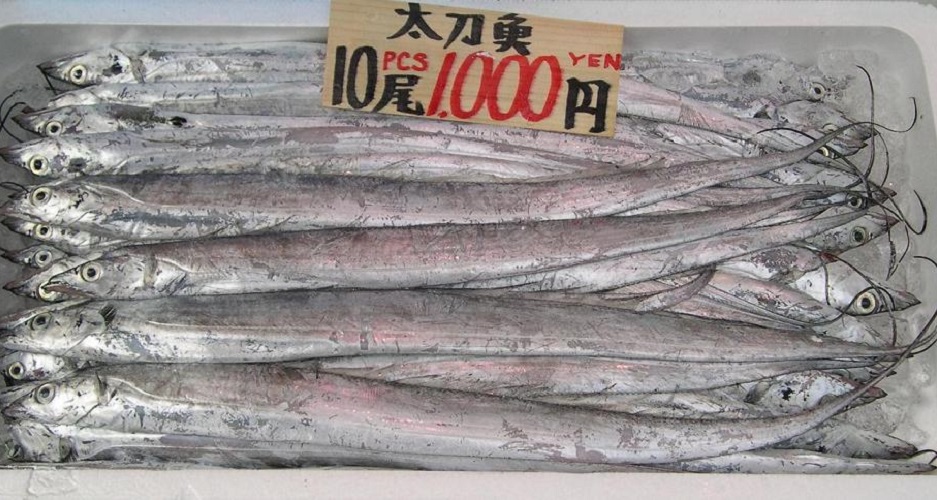Fish that are highly valued by Chinese consumers, such as largehead hairtail, would grow in value and in the amounts that are caught if industrial fisheries increased the mesh size of their nets.
New research by the Sea Around Us initiative at UBC’s Institute for the Oceans and Fisheries found that trawlers operating in China’s coastal waters are overfishing 21 economically important species because the mesh size is so small that, together with large, desirable fish, undersized fish are also getting caught. This means that fish are being taken out before they are able to reproduce.

Yellow croaker was one of the species studied. Image by 思源如宁, Wikimedia Commons.
“Previous papers have demonstrated that the mesh size commonly used by industrial fisheries in China is one centimetre, despite the fact that regulations stipulate that permitted sizes are between 2.5 centimetres and 11 centimetres,” said Lu Zhai, the lead author of the study and a visiting international research student with the Sea Around Us. “The extremely small mesh size leads to the bulk of the catch consisting of ‘trash fish,’ which are too small for human consumption and end up ground as feed for aquaculture.”
To understand the implications of such practices, Zhai and her supervisor, the Sea Around Us principal investigator Daniel Pauly, estimated how the average size of the fish they selected, their economic value and their biomass would change if 10-centimetre meshes were used.
They found that, in the long term, the average size of the fish caught would double and the prices per landed weight of fish would increase fivefold.
“Those that catch largehead hairtail, which is very popular and pricey and cannot be farmed, would see massive financial benefits if they increased their mesh sizes and captured larger fish that have been given enough time to develop,” Pauly said.
Besides the predicted positive results for fishers, allowing smaller fish to reach a larger size would increase their overall abundance, which, in turn, would contribute to the re-establishment of healthier coastal ecosystems.
“The analyses of the relative biomass of the 21 species we studied show that there is a depletion rate of 84 per cent, which matches results from other studies,” Zhai said. “This means that rebuilding stocks should be the foremost goal of fisheries management in China.”
The paper “Yield-per-Recruit, Utility-per-Recruit, and Relative Biomass of 21 Exploited Fish Species in China’s Coastal Seas” was published this week in Frontiers in Marine Science https://doi.org/10.3389/fmars.2019.00724



